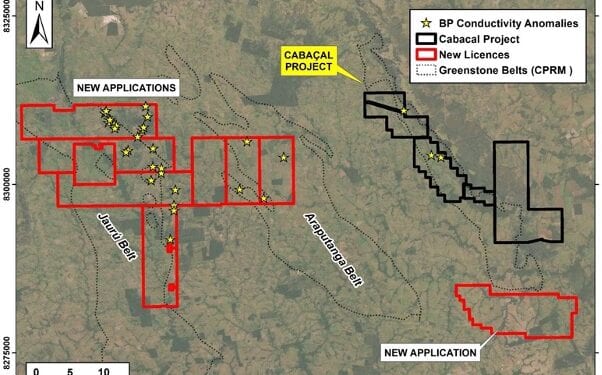Expands Cu-Au Exploration Portfolio
Meridian Mining (TSXV: MNO) has obtained promising initial first results from its surface and borehole Electromagnetic (EM) surveys at its camp-scale Cabaçal Copper-Gold VMS project in Mato Grosso, Brazil.
CEO and President, Dr Adrian McArthur, said this first geophysics programme has returned immediate results, identifying a large borehole EM (BHEM) conductor, situated along strike from the historical Cu-Au workings of the Cabaçal mine and within the South Copper Zone (SC”) sulphide mineralisation recently intercepted by the company’s diamond drilling.
The surface EM survey detected a strong bedrock conductor at Cabaçal South, centred ~400m south of the historic mine, with a conductivity consistent with a potentially massive-sulphide target. This programme has also modelled a series of large shallow conductors extending out from the Cabaçal mine’s copper – gold workings a further 200 m south east.
The company is planning a follow up test programme planned for later in the 2nd Quarter.
“The recognition of both surface and bore hole conductors over the Cabaçal mine area and their extensions southwards is consistent with records that significant copper and lower grade gold mineralisation was not mined due to the high gold cut-off grade of 3g/t that was used,” Dr McArthur said.
“Defining Cabaçal’s surface EM response now allows us to revisit the modern belt-scale airborne EM data and look for analogue responses that were not selected in the original review; this has opened up a whole new set of parameters for detecting shallow Cabaçal copper-gold type targets along the belt. Cabaçal South’s bedrock conductor is very typical of conductors found in the worlds VMS camps and we look forward to testing this later in the current program.
“The securing of the southern extent of the Cabaçal belt trend was an important long term goal of the Company and firmly establishes the Company as the dominate land holder of the prospective ground. “Our move into the adjoining Jaurú and Araputanga Greenstone belts, based on prioritised targets defined by BP Minerals in the 1980’s is significant. To have immediately secure 484 km2 of licenses within two separate greenstone belts with prospective geology for copper, gold and nickel is something no company could have achieved in similar jurisdictions like Canada or Australia.”












